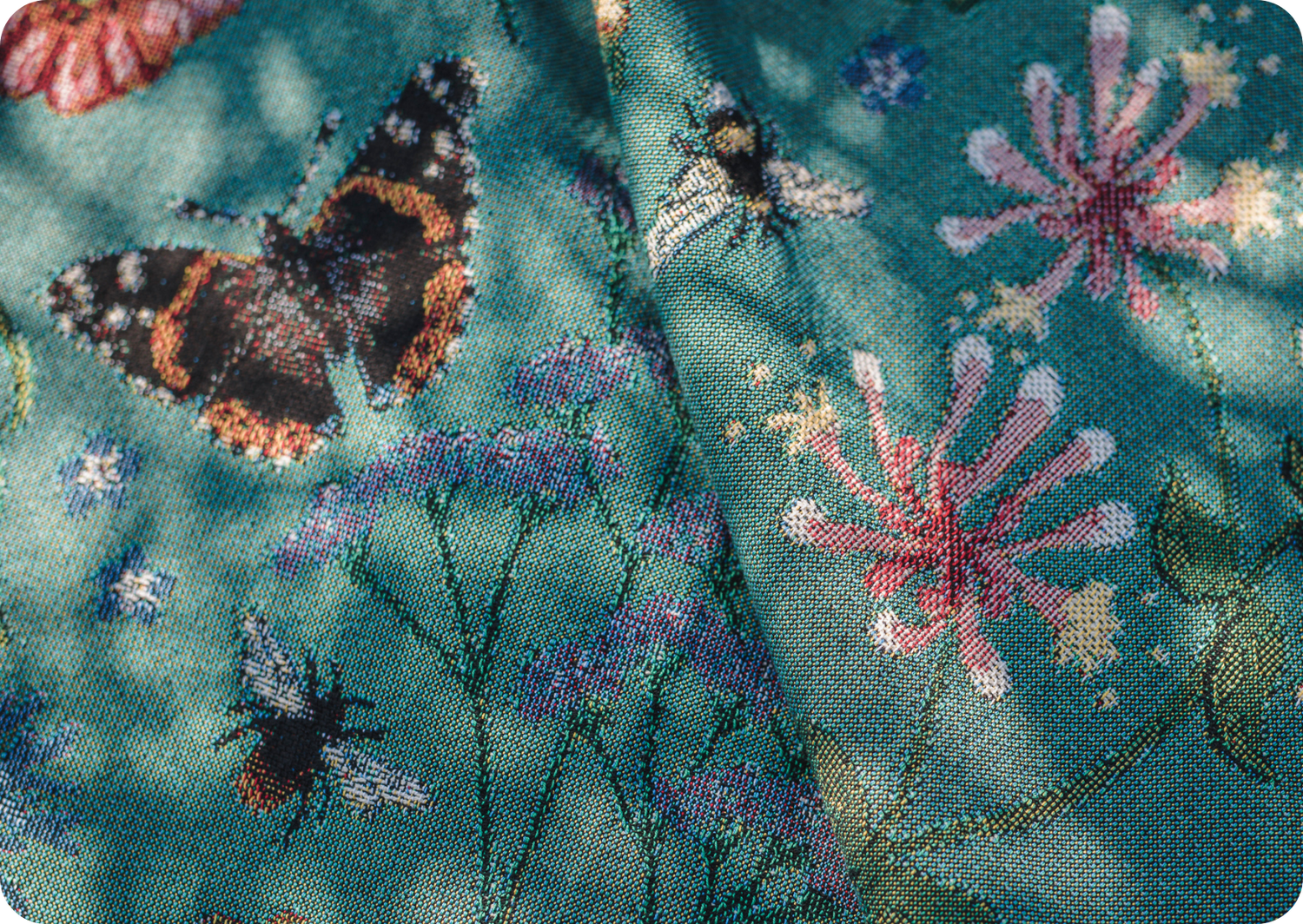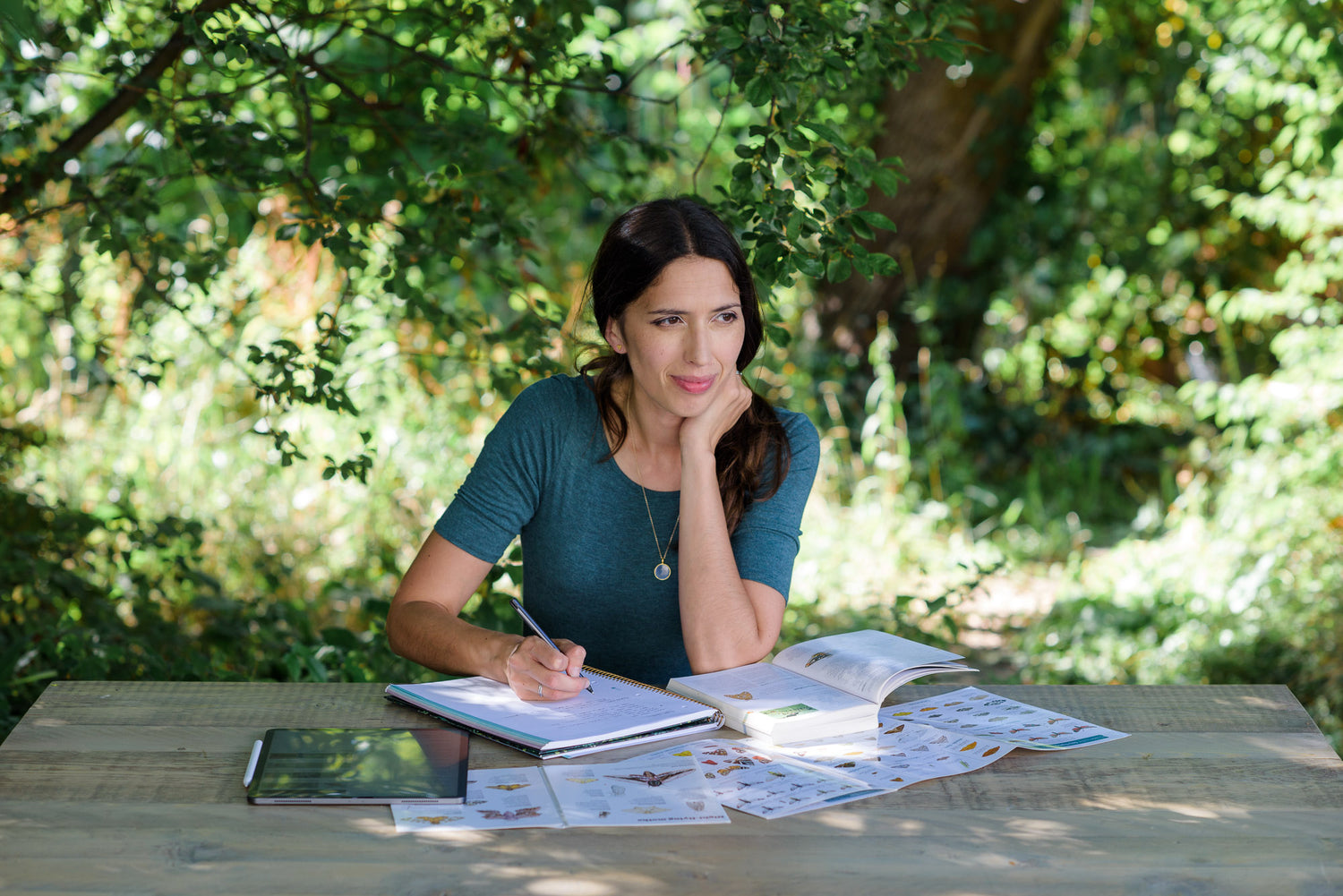It’s a challenge to show our children how not to be ruled by technology, especially in a world where we’re constantly interrupted by pings, scrolls, and screens. It can feel even harder to carve out those quiet, meaningful moments we remember from our own childhoods: the muddy knees, the pockets full of feathers and stones, the freedom of being completely absorbed in the natural world.
As parents, we all want our children to grow up with a love for nature - a connection that grounds them, sparks their creativity, and helps them feel part of something bigger. But making that happen in today’s world can feel like just one more thing on a very long to-do list.
That’s why I wanted to share five simple, screen-free ways to help your child connect with nature. These aren’t complicated projects or grand outdoor adventures, but gentle, low-prep invitations to slow down, explore, and experience the wonder of the world around us. And they work in any season, wherever you live.

1. Go on a Nature Scavenger Hunt
A nature scavenger hunt is a brilliant way to turn a walk into an adventure. You only need a It list of items to find and a spirit of curiosity. The beauty of a scavenger hunt is that it helps children see the natural world through fresh eyes. Suddenly, every corner of the garden becomes a treasure trove waiting to be explored, and it both builds their observation skills and introduces them to the diversity of nature.
Want an easy place to start? I’ve created a free beautifully illustrated scavenger hunt that you can download and print.
GET YOUR SCAVENGER HUNT HERE (opens a popup)

2. Create a Nature Journal Together
Keeping a nature journal is a simple but powerful way to deepen your child’s connection with the world around them. It’s a place where they can record their observations, sketch what they see, and capture their thoughts about their outdoor experiences. The art of noticing and being present in the moment is cultivated by this practice of observation.
All you need is a dedicated notebook. Encourage your child to take it along on walks, or to spend a few minutes each day recording what they notice. Over time, this journal becomes a personal record of their growing relationship with nature, and a way for them to look back and see how their understanding and appreciation have evolved.
In Curiosity Club, our nature subscription for kids, every child receives a Field Journal that contains prompts and space for nature journaling to help children engage more deeply with their surroundings. These journals are their space to become explorers, celebrating; about making those quiet moments of observation making them a meaningful part of their day.

3. Leaf Chromatography Experiment
For those little ones who love to ask ‘why’ and ‘how’, a leaf chromatography experiment is a brilliant way to explore the hidden colours in leaves. It’s a simple science activity that reveals the pigments behind the green, showing your child the beautiful complexity of nature right before their eyes.
All you need are some fresh green leaves, rubbing alcohol, and a coffee filter or chromatography paper. Crush the leaves, soak them in alcohol, and watch as the pigments separate and reveal the yellows and reds that are usually hidden behind the green. It’s an engaging way to introduce children to the science of plants and photosynthesis, and it’s sure to spark a few 'wow' moments.
It’s a magical introduction to plant science, and an example of one of the many hands-on experiments we include in Curiosity Club to bring natural history to life through real-world discovery, nurturing that innate curiosity all children have about the world around them.

4. Forage and Create a Seasonal Snack
Whether it’s wild berries in late summer, rosehips in autumn, or edible flowers in spring, foraging can be a safe, slow way to explore your local landscape. Always forage responsibly (and check local rules), but even a few home-grown herbs or garden fruits can become the starting point for a fun, seasonal snack.
A child-friendly favourite: Yoghurt Parfaits layered with fresh fruit, honey, and granola. Let your child wash, layer, and decorate their own creation—perfect for connecting the kitchen and the outdoors.

5. Set Up a Bird Feeder and Start a Species Log
A simple bird feeder or seed tray can attract surprising visitors. Watching birds up close helps children develop patience, attentiveness, and respect for wildlife. Try pairing it with a species guide or a running list of sightings in their journal.
Every Curiosity Club pack includes a species logbook and guides to local wildlife, whether garden birds, woodland mammals, or pond dwellers, helping your child build a lifelong relationship with the living world around them.
Bringing Nature Home with Curiosity Club
These five ideas are simple, low-prep, and full of potential for joyful connection....but I know it can still be hard to keep it going on your own. That’s why I created Curiosity Club: a monthly nature subscription for children aged 7–12 (and younger ones with a little support). Each box is designed to take the pressure off parents while bringing beauty, creativity, and science into your child’s life, without the need for screens.
Every month includes:
- 10+ screen-free craft activities and science experiments
- Beautifully illustrated nature guides
- Creative crafts using recycled materials
- Mindfulness activities to help nurture confidence
- Collectible embroidered patches and pins
- A themed journal and species-spotting prompts
If you’d love to bring more wonder into your family’s week, even just an afternoon at a time, I’d be honoured to welcome you.
Learn More About Curiosity Club Here








